Wild Bergamot: A Highly Useful and Beautiful American Wildflower
Medicinal herbsWild Bergamot, botanical name Monarda fistulosa, is a perennial wildflower herb native to the North American continent with a rich tradition of use in Native American culture as both a culinary and medicinal herb.

It has lovely, irregularly shaped tubular lavender flowers that look like petals and bloom in a cluster. These flowers attract pollinators, including bees, butterflies, and hummingbirds.
Which Bergamot? Wild Bergamot
Let’s try to clear up any confusion about the name right now.
Wild bergamot is often confused with other herbs in the Monarda genus. Both wild bergamot and Monarda didyma are referred to as both “Bergamot'' and “Bee Balm.” Wild bergamot has small lavender flowers, and Monarda didyma has pink flowers that grow in more prolific clusters. Otherwise, both plants are so similar they can be used interchangeably. Lemon mint, or Monarda citriodora, is an annual of the same genus and is sometimes called Lemon Bergamot.
The wildflower herb bergamot is definitely not the same bergamot that flavors Earl Grey. Anyone who says so is mistaken. That bergamot is a citrus tree native to the Mediterranean and has a very different flavor profile.
However, the American wildflower bergamot was used by the Oswego tribe to make a delightful herbal tea with many therapeutic properties. This tea was used by settlers during the leadup to the American Revolution to take the place of English-imported tea from India. That may be where some of that confusion comes from.
Culinary Uses of the Bergamot Herb
Bergamot has a scent and flavor that is very similar to thyme or oregano. It is a spicy, slightly bitter flavor that would pair well with Italian dishes.
The reason for this flavor is the high concentration of thymol, the oil constituent of thyme.
The leaves of bergamot are most tender and tasty before the plant flowers and can be used fresh or dried for later. Use these leaves in any place you would use oregano, thyme, marjoram, and similar aromatic herbs.
And as mentioned above, it makes a lovely soothing tea, which brings us to the next topic.
Medicinal Uses of Wild Bergamot
Thanks to that high thymol concentration, wild bergamot has a number of beneficial qualities. To use bergamot medicinally, the flowering top is used and dried to make tea. An essential oil may also be extracted from the leaves and flowers. Bergamot herbs are:
- High in antioxidants
- Antiseptic
- Antibacterial
- Antifungal
- Antiviral
- Astringent
Bergamot makes a wonderful bitter digestive aid, and it can be used as an expectorant or gargle to ease cold and flu symptoms.
Since it has astringent properties, it’s also good for soothing gum infections and sore throats or can be used topically in a tincture to wash wounds and soothe rashes.
Bergamot has some uterine-stimulating properties, so pregnant moms should avoid using bergamot in medicinal amounts. Those same properties do help to soothe irregular and painful periods, though.

Bergamot Seed Starting Tips
- Start seeds indoors 6-8 weeks before the last frost of spring or sow directly outside in autumn.
- Bergamot seeds need light for germination, so press seeds firmly into the soil to ensure good contact while still allowing some light.
- Seeds will take 10-28 days to germinate with a soil temperature of 60-70°F.

Growing & Maintaining Bergamot Plants
Bergamot can grow in a variety of soils. Space plants 12 inches apart. Bergamot plants can be divided every few years. When grown in full sun, bergamot can grow 2 to 5 feet tall. Pinching back new growth will encourage branching and fuller growth.
Wild bergamot is an excellent flower for attracting hummingbirds, butterflies, and bees. If you are looking to attract more beneficial pollinators to your garden, add bergamot. It can be planted with yarrow and coneflower.

Harvesting Bergamot Herbs
Harvest bergamot similarly to the way you would prune basil. It’s easy to harvest the leaves by pinching a third or halfway down the plant above a split. The plant will split off branches and become even bushier, providing you with more bergamot to enjoy.
Harvest the flowers and top few leaves for tea.
For culinary use, it’s best to harvest bergamot before the plant flowers for the best flavor and texture.

We hope you enjoy growing and using this distinctive native American wildflower! Wild Bergamot is a delight and extremely useful to have around. Plus, it’s a perennial, so each plant will last more than just a season.
If you found this blog helpful, share it with your gardening friends!




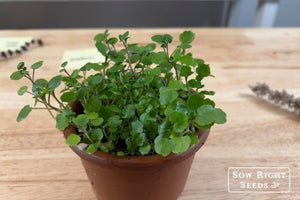
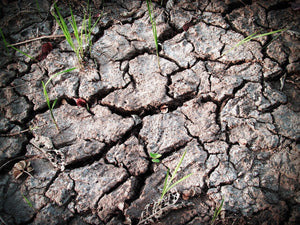
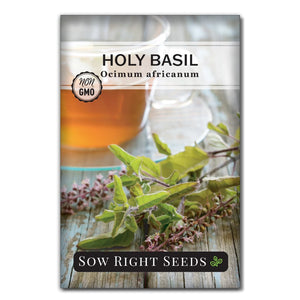
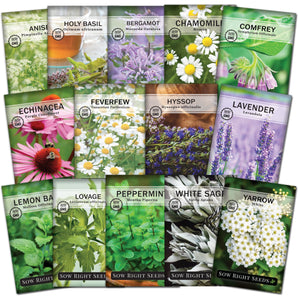
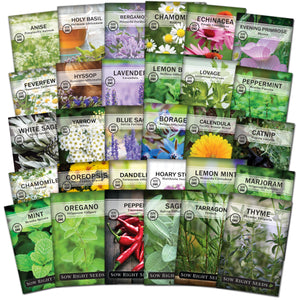
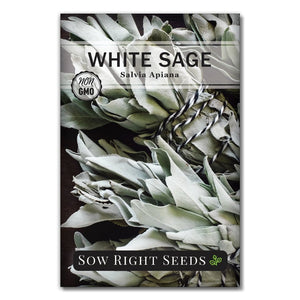
Winter sowing is an excellent way to start seeds. Both Bee Balm and Coneflowers can be winter sown. Follow the steps in our blog post-https://sowrightseeds.com/blogs/planters-library/how-to-winter-sowing-milk-jug-greenhouse
Looking to buy some seeds Be Balm and Coneflowers. Just wondering if they do well in Norther Ontario Canada. P3B 1H2 Sudbury, On. Zones 4A and 4B. And if want to plant in fall how do I get seed ready for winter sowing or should I wait till spring. Like to try winter sowing as fairly new to flower gardening but I guess never late than never. Where are you at. Are you in Canada or USA.
Leave a comment